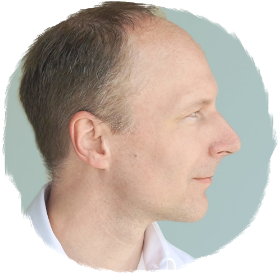I asked her, “How often will I need to practice squatting per day in order to be able to squat as well as you do?”
She said, “That’s not how it works.”
I might need to mention that I currently live in the South of Vietnam, where seemingly everyone seems to be rather flexible and well able to squat. And for the girl I asked, she’s Vietnamese as well.
And therefore, I want to look at what people here in Vietnam do differently than people in other places (and cultures) where people in general are not flexible and not able to squat well; not able to fold their legs with ease and for extended periods of time.
Now, if you don’t live in a country like Vietnam yourself, it might be difficult to look for such differences. And furthermore, difficult to verify my thinking. However, I think it would be necessary to see for yourself, in order to even consider making the bold changes I’m suggesting in this post.
For example, I often see people here in Vietnam sit on chairs in Indian fashion, with both legs up and crossed on the seating platform, or in variations thereof (for example with one or both feet on the seating platform and the knees in front or to the side of their chest.) Or they sit on very low chairs, chairs that look like LEGO-versions of chairs, as low as a couple of books stacked on top of each other. Or they literally use a brick or small block of wood as a chair. That’s how low they often sit and they fold their legs, that is they fully bend their knees and hip joints. In Vietnam you might see people squat frequently and everywhere. They often squat when they wait (instead of standing up straight or leaning against a wall), and they even squat on top of benches, curbs and walls. Or they sit on the floor altogether, maybe on a piece of cardboard on a sidewalk, or on a thin cushion at home. Some even take lunchtime naps on top of their motorbikes on the side of the road, with their legs somehow pretzeled up to fit on the seat of their ride. And all that looks perfectly normal.
Here in Vietnam, in public, I see people fold their legs frequently. Whereas back home in Austria, Europe, I hardly ever (close to never) saw anyone fold their legs like that in public.
In Austria, a western country, we have Yoga and stretching classes, and fitness and movement classes, with very clever exercises to learn and maintain how to fold the legs, and twist, and stretch and extend ones spine. However, these classes are attended only by a small portion of the general population. And even for the few who care about folding their legs and getting into unusual postures, they don’t—and can’t—use these movements and postures much when they are outside of class.
I just wrote »unusual postures«. But, unusual for whom?
Culture is strong. Going against one’s culture does not only mean NOT to carry on one’s culture, but to betray one’s culture. We’re asked to uphold and maintain our own cultures, but to whose benefit? At what cost? To what ends!
Side-Note: I recently saw a Youtube video by Ben Patrick, a famous fitness coach in the US, famous for his bending-the-knees workout system. In that particular Youtube video he filmed himself stopping his car while on a long commute, getting out of his car, and exercising with weights next to the highway, in order to maintain his leg’s flexibility and strength. This was such an odd behaviour (albeit perfectly rational and relate-able) that I’m still thinking about it often. Why do we Westerners have to resort to such extreme measures?
So, the next time you’re invited to dinner with your grandparents or parents, or your boss maybe, you might not want to place your feet on your seat, nor stick your knees in between your torso and the table… in order to respect THEIR culture and THEIR upbringing — and all the things THEIR parents told them over and over and over (and over and over) again what to do and what not to do.
Sit straight,
don’t put your feet on the seat,
don’t lean with your elbows on the table,
don’t slouch,
put both feet down on the floor,
stop shaking your leg,
sit still,
make a friendly face,
answer me: “How was your day?”
and be surprised when all they get is, “It was ok”.
And finally, the ones who complied and learned all the rules expect that everyone else does the same as well. This is how a culture teaches itself and maintains the behaviour of its members.
But if you want to attain and maintain normal function of your knees and legs… when you’re on your own, or amongst your own (to say it harshly), you might want to think about creating your own branch of culture, and form habits that are in alignment with your own goals and your own thinking.
“Now you start to sit like me”, she observed.
“I try to”, I replied.








